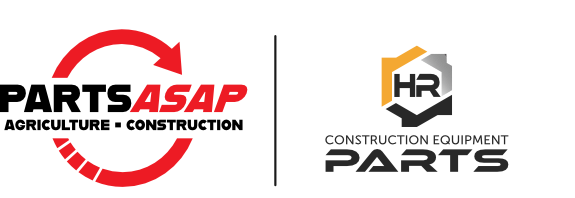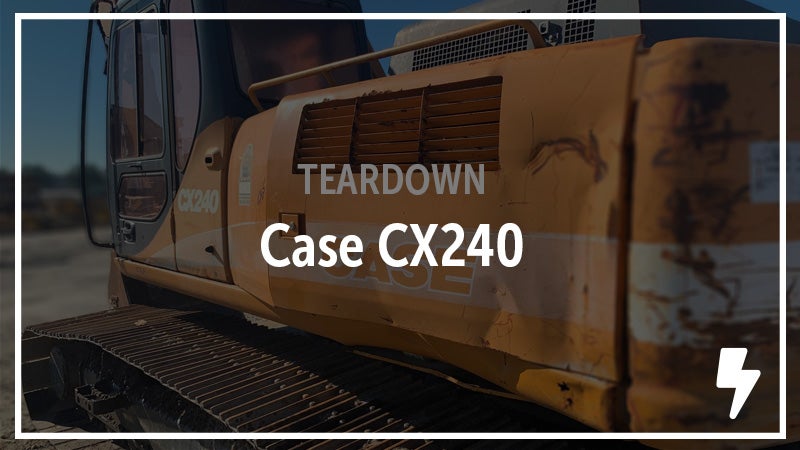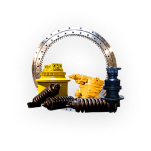
Excavator Spare Parts to Avoid Costly Downtimes
Anyone with experience working on a construction site knows that one of the top profit killers can be unexpected downtimes. When an excavator breaks and a worksite comes to a halt, costs can add up quickly. And with a new unpredictability in timelines for a part’s deliverability and availability, a sudden breakdown can lead to a less than clear answer to knowing when you’ll get back up and running.
Luckily, it looks like normality is on the horizon, but until that day arrives, identifying potential problems and preparing in advance can help you avoid escalating issues from downtimes. To help, we’ve identified a few key parts on an excavator to evaluate or add to your spare excavator parts inventory and some simple tips to put in place to make your downtimes as short as possible.

Keep Excavator Parts That Routinely Wear Out in Inventory
Even at the best of times, knowing what filters, seals, and gaskets need to be replaced at certain times is a good way of planning ahead and making sure your present self does your future self a favor by keeping those parts in inventory. But today, even the most common consumable part can be met with a surprise delay in delivery.
Now is a good time to extend your inventory of parts at the ready to include any low-cost part that could lead to prolonged downtime from sourcing or delivery — nobody is happy when a worksite comes to a crawl while a $5 bolt needs to be found and delivered.
To find what parts you might consider keeping in stock it can help to take a good look at the machine, look at the wear in areas of the machine, and ask yourself, “If this simple part breaks, how long will downtime be while it gets repaired?” It can also help to talk to the machine’s operator. Often their familiarity with a particular machine can lead to straight insight about simple parts that are much more critical than you’d expect.
Pay Close Attention to Your Undercarriage
The undercarriage on your excavator is routinely an area that is prone to wear and tear, simply from its position on the machine and the work it performs. For this reason, you should take time to do a deep dive on the condition of parts that exist in high-friction areas or that are routinely subject to impacts and wear.
Excavator undercarriage parts to inspect and to consider having spare parts on hand (depending on cost and condition) are:
Create a Machine Log With the Condition of Parts
A machine log where you track the condition of the parts on your excavator, their current lifespan, and any issues can be created using dedicated software — or simply a spreadsheet or notebook. This simple tool will let you take a quick look at the critical components on the excavator and lay early plans for repairs since often you’ll be able to estimate roughly how long a part might need until it requires a replacement or repair. You can even log availability and cost of individual parts in this log.
In your log, you can also add notes about any issues and even do a quick search of available replacements — if a part is showing signs of trouble you can determine if a sudden break will be a quick fix or if having its replacement on hand will save you in the long run.
A machine log can also be helpful in understanding the health of your entire fleet if you have multiple machines and let you visualize what will happen if a critical machine goes down and impacts your entire jobsite. If renting a replacement machine is a possibility, you can even keep rates in this document so you’ll see what the costs to you could be if you need a temporary replacement and don’t have time to wait.

Move Unplanned Downtime into Planned Downtime
Every excavator will need some amount of planned downtime to keep it performing well, and balancing how much time it spends in maintenance and how much time it spends at work is always difficult. But one way to keep maintenance time lower is to make sure planned downtime is as productive as possible.
During planned downtime take a hard and close look at any adjacent parts or parts that can be replaced or repaired simultaneously. Often you’ll discover a part that is on the edge of needing maintenance, but that giving it attention now while the machine is already inactive will save immensely in time. A good mechanic that takes a proactive approach often knows that getting every workable second out of a part often isn’t the choice that pays off in the long run.
Even some early calls to determine availability or repair times can be built into timelines. Waiting a day or two is much more palatable if you know that the downtime will only start once the part arrives and the entire machine will come out ready to run for the longest span possible.
Evaluate All Construction Parts Replacement and Repair Costs
Today, getting a new replacement excavator can be more than just about the money with chip shortages, shipping delays, and lack of inventory and even the most aggressive companies have taken a renewed focus on extending the life of their equipment.
Larger excavator repairs from replacing damaged booms to swapping on replacement cabs have become increasingly a smart way to defer costs and keep an excavator at work. What might have seemed like a repair larger than you’d normally tackle is now often routine in many shops as companies look to maximize the life of the equipment they currently have.
If you’ve already created the machine log with a parts list, this can be a good place to begin to catalog the cost, availability, and delivery times of specific parts that are critical to keeping your excavator up and running. Sadly, you might discover you’re not the only person in search of a replacement part, but doing the work now will help you better estimate the effect a failing part could have on your excavator and even determine whether a replacement part will be best as new, rebuilt, or simply used from another machine.
The cylinders and final drives on your excavator are especially important to its operation and taking a close look at their condition and the availability of replacements can be a smart step in avoiding costly downtimes.
Like a lot of things currently, the cost and availability of replacement or spare excavator parts has been impacted across the globe, but with some simple planning and analysis you can mitigate the downtime from problems and keep your excavator working well into the future.
If you do find yourself in need of a replacement excavator part or you’re searching for a spare excavator part to keep on hand, our dedicated Parts Specialist are always here to help. As an industry-leader in salvaging excavators, our inventory is often unmatched and unsurpassed and with our connected smart tools they can search not just our parts network, but a worldwide connected network of parts providers. Just give us a call.



